Cytokeratin 4 Recombinant Rabbit Monoclonal Antibody [SN2001]

cat.: ET1611-91
| Product Type: | Recombinant Rabbit monoclonal IgG, primary antibodies |
|---|---|
| Species reactivity: | Human, Rat |
| Applications: | WB, IF-Cell, IF-Tissue, IHC-P |
| Clonality: | Monoclonal |
| Clone number: | SN2001 |
| Form: | Liquid |
| Storage condition: | Shipped at 4℃. Store at +4℃ short term (1-2 weeks). It is recommended to aliquot into single-use upon delivery. Store at -20℃ long term. |
| Storage buffer: | 1*TBS (pH7.4), 0.05% BSA, 40% Glycerol. Preservative: 0.05% Sodium Azide. |
| Concentration: | 1ug/ul |
| Purification: | Protein A affinity purified. |
| Molecular weight: | 56 kDa |
| Isotype: | IgG |
| Immunogen: | Synthetic peptide within Human Cytokeratin 4 aa 1-50 / 520. |
| Positive control: | 293T cell lysates, Hela, MCF-7, A431, rat esophagus tissue, human tonsil tissue, human skin tissue, human esophagus tissue. |
| Subcellular location: | Cell surface, intermediate filament, nucleus. |
| Recommended Dilutions:
WB IF-Cell IF-Tissue IHC-P |
1:500-1:2,000 1:50-1:200 1:50-1:200 1:50-1:200 |
| Uniprot #: | SwissProt: P19013 Human | Q6IG00 Rat |
| Alternative names: | CK 4 CK-4 CK4 CYK4 Cytokeratin 4 Cytokeratin-4 Cytokeratin4 FLJ31692 K2C4_HUMAN K4 Keratin 4 Keratin Keratin type II cytoskeletal 4 Keratin-4 Keratin4 KRT 4 Krt4 type II cytoskeletal 4 Type-II keratin Kb4 |
Images
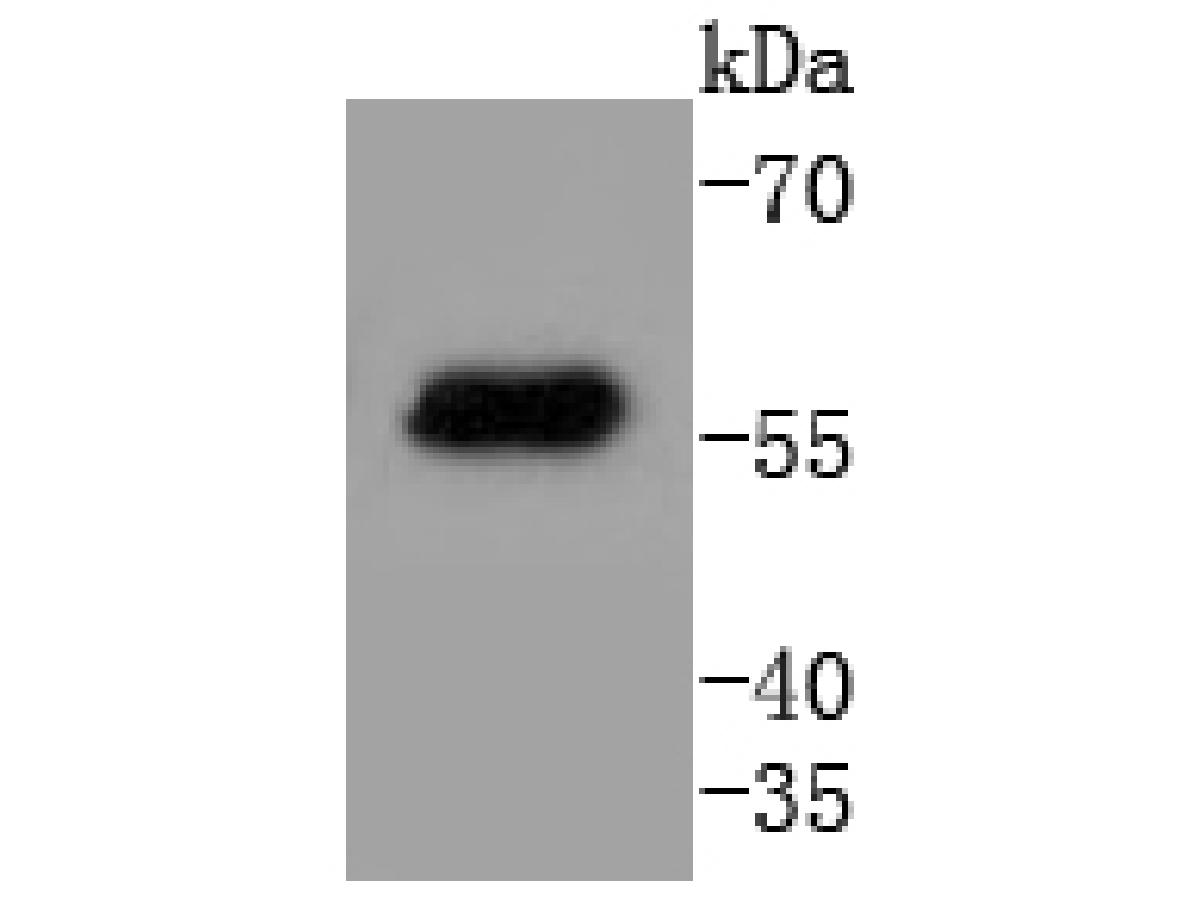
|
Fig1: Western blot analysis of Cytokeratin 4 on 293T cell lysates. Proteins were transferred to a PVDF membrane and blocked with 5% BSA in PBS for 1 hour at room temperature. The primary antibody (ET1611-91, 1/500) was used in 5% BSA at room temperature for 2 hours. Goat Anti-Rabbit IgG - HRP Secondary Antibody (HA1001) at 1:5,000 dilution was used for 1 hour at room temperature. |
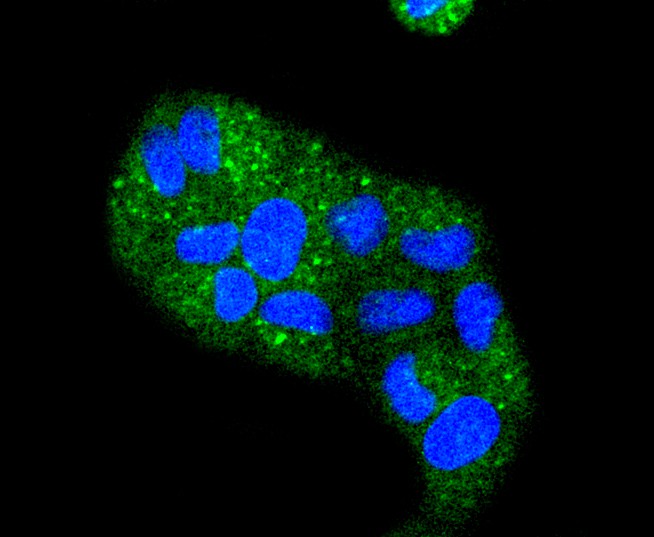
|
Fig2: ICC staining of Cytokeratin 4 in Hela cells (green). Formalin fixed cells were permeabilized with 0.1% Triton X-100 in TBS for 10 minutes at room temperature and blocked with 1% Blocker BSA for 15 minutes at room temperature. Cells were probed with the primary antibody (ET1611-91, 1/50) for 1 hour at room temperature, washed with PBS. Alexa Fluor®488 Goat anti-Rabbit IgG was used as the secondary antibody at 1/1,000 dilution. The nuclear counter stain is DAPI (blue). |

|
Fig3: ICC staining of Cytokeratin 4 in MCF-7 cells (green). Formalin fixed cells were permeabilized with 0.1% Triton X-100 in TBS for 10 minutes at room temperature and blocked with 1% Blocker BSA for 15 minutes at room temperature. Cells were probed with the primary antibody (ET1611-91, 1/50) for 1 hour at room temperature, washed with PBS. Alexa Fluor®488 Goat anti-Rabbit IgG was used as the secondary antibody at 1/1,000 dilution. The nuclear counter stain is DAPI (blue). |

|
Fig4: ICC staining of Cytokeratin 4 in A431 cells (green). Formalin fixed cells were permeabilized with 0.1% Triton X-100 in TBS for 10 minutes at room temperature and blocked with 1% Blocker BSA for 15 minutes at room temperature. Cells were probed with the primary antibody (ET1611-91, 1/50) for 1 hour at room temperature, washed with PBS. Alexa Fluor®488 Goat anti-Rabbit IgG was used as the secondary antibody at 1/1,000 dilution. The nuclear counter stain is DAPI (blue). |
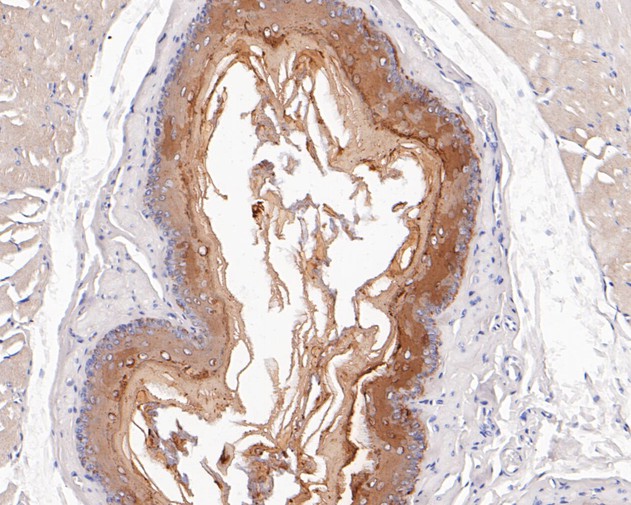
|
Fig5: Immunohistochemical analysis of paraffin-embedded rat esophagus tissue using anti-Cytokeratin 4 antibody. The section was pre-treated using heat mediated antigen retrieval with Tris-EDTA buffer (pH 8.0-8.4) for 20 minutes.The tissues were blocked in 5% BSA for 30 minutes at room temperature, washed with ddH2O and PBS, and then probed with the primary antibody (ET1611-91, 1/50) for 30 minutes at room temperature. The detection was performed using an HRP conjugated compact polymer system. DAB was used as the chromogen. Tissues were counterstained with hematoxylin and mounted with DPX. |
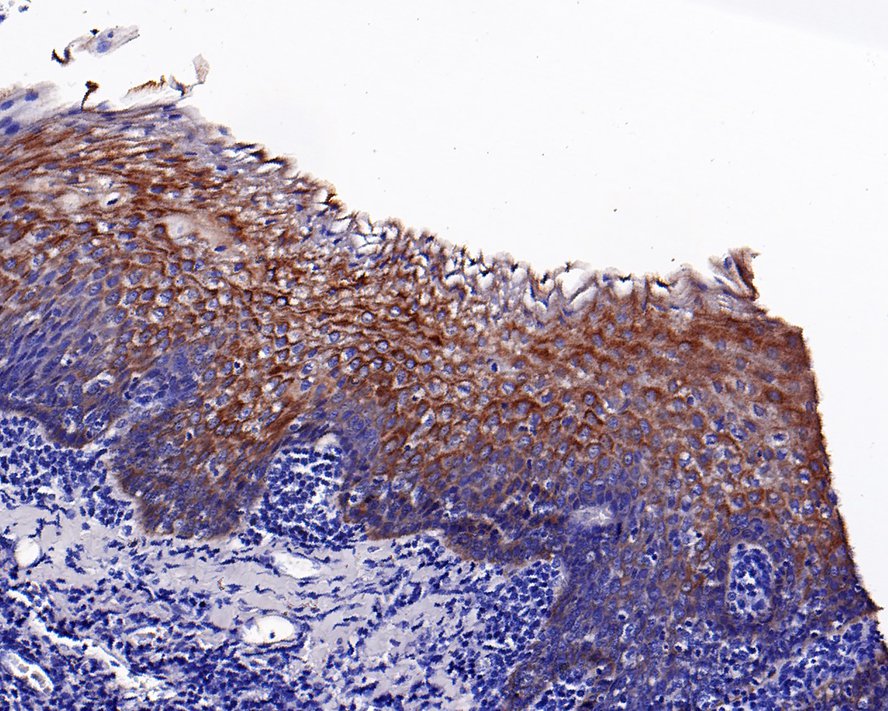
|
Fig6:
Immunohistochemical analysis of paraffin-embedded human tonsil tissue with Rabbit anti-Cytokeratin 4 antibody (ET1611-91) at 1/200 dilution. The section was pre-treated using heat mediated antigen retrieval with Tris-EDTA buffer (pH 9.0) for 20 minutes. The tissues were blocked in 1% BSA for 20 minutes at room temperature, washed with ddH2O and PBS, and then probed with the primary antibody (ET1611-91) at 1/200 dilution for 1 hour at room temperature. The detection was performed using an HRP conjugated compact polymer system. DAB was used as the chromogen. Tissues were counterstained with hematoxylin and mounted with DPX. |
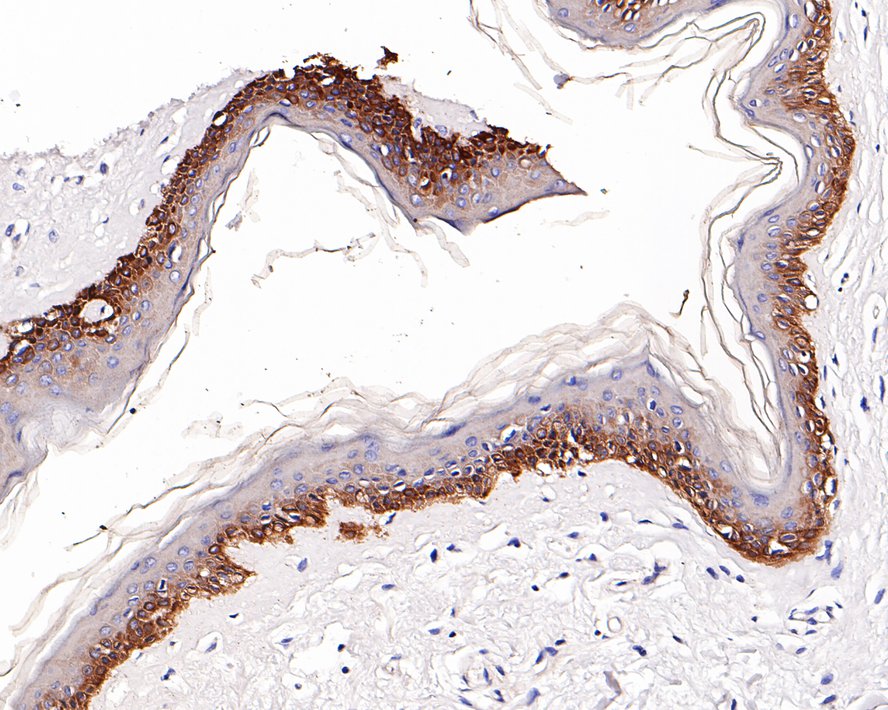
|
Fig7:
Immunohistochemical analysis of paraffin-embedded human skin tissue with Rabbit anti-Cytokeratin 4 antibody (ET1611-91) at 1/200 dilution. The section was pre-treated using heat mediated antigen retrieval with Tris-EDTA buffer (pH 9.0) for 20 minutes. The tissues were blocked in 1% BSA for 20 minutes at room temperature, washed with ddH2O and PBS, and then probed with the primary antibody (ET1611-91) at 1/200 dilution for 1 hour at room temperature. The detection was performed using an HRP conjugated compact polymer system. DAB was used as the chromogen. Tissues were counterstained with hematoxylin and mounted with DPX. |
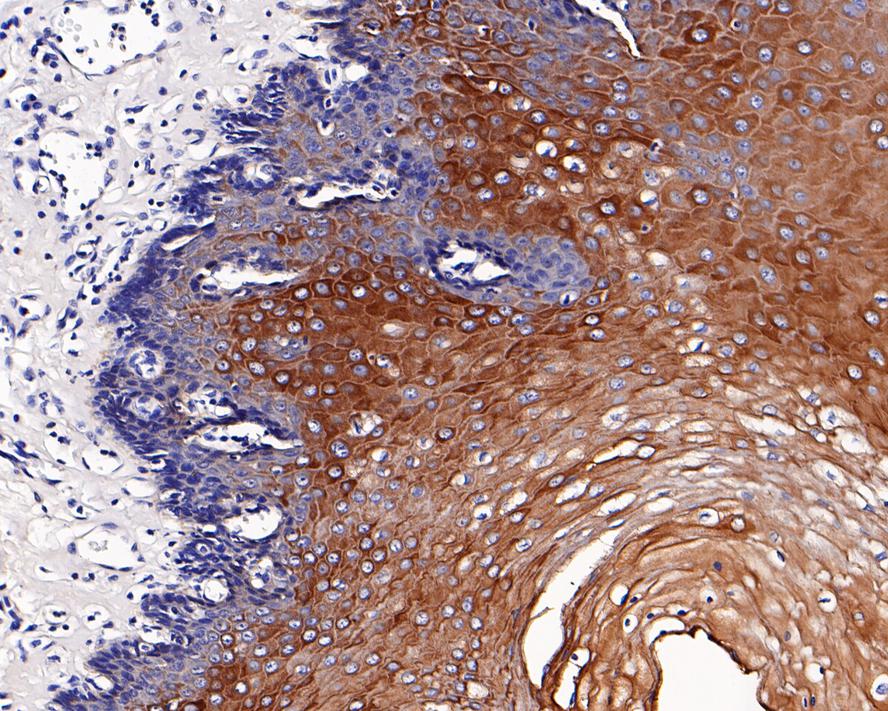
|
Fig8:
Immunohistochemical analysis of paraffin-embedded human esophagus tissue with Rabbit anti-Cytokeratin 4 antibody (ET1611-91) at 1/200 dilution. The section was pre-treated using heat mediated antigen retrieval with Tris-EDTA buffer (pH 9.0) for 20 minutes. The tissues were blocked in 1% BSA for 20 minutes at room temperature, washed with ddH2O and PBS, and then probed with the primary antibody (ET1611-91) at 1/200 dilution for 1 hour at room temperature. The detection was performed using an HRP conjugated compact polymer system. DAB was used as the chromogen. Tissues were counterstained with hematoxylin and mounted with DPX. |
Note: All products are “FOR RESEARCH USE ONLY AND ARE NOT INTENDED FOR DIAGNOSTIC OR THERAPEUTIC USE”.